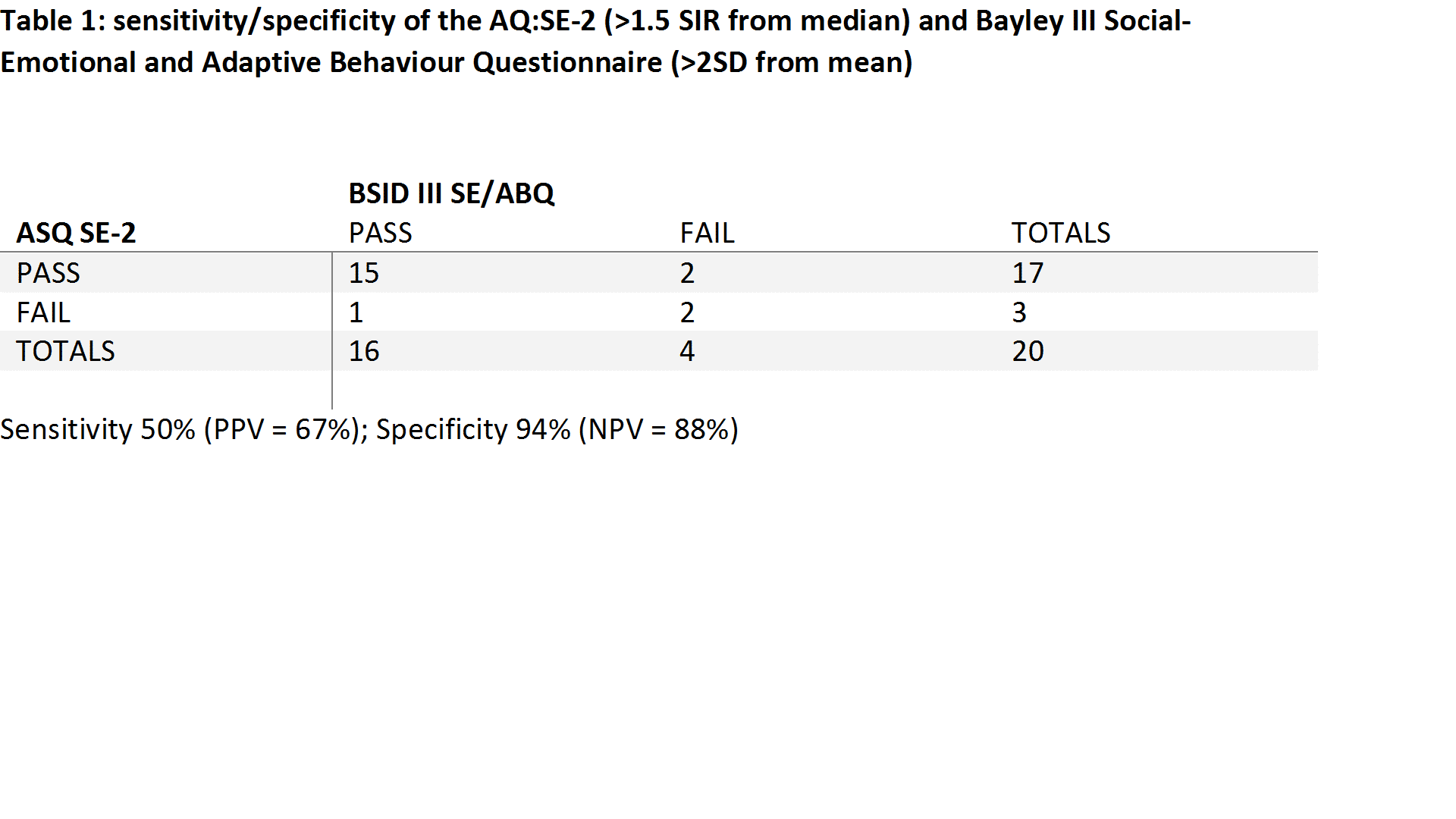
Validity of Ages and Stages Questionnaires Social Emotional-2 at Predicting Bayley III Social Emotional and Adaptive Behavioural Results in Children with Congenital Diaphragmatic Hernia
2Department of Psychology, Our Lady’s Children’s Hospital, Crumlin
3Paediatric School of Medicine, Trinity College Dublin
Background: Congenital diaphragmatic hernia (CDH) is a rare congenital malformation affecting 1/3000 live births. Neurodevelopmental delay in survivors ranges from 16% to 70%.
Objective: To examine the correlation between Ages and Stages Questionnaires Social Emotional - 2 (ASQ:SE-2) and Bayley Scales of Infant and Toddler Development III Social-Emotional and Adaptive Behaviour Questionnaire (BSID III SE/ABQ) results in a cohort of children with CDH.
Methods: This was a singe centre prospective cohort study of neurodevelopmental outcomes of patients with CDH at 24-36 months corrected age. The primary outcome was correlation of social emotional and adaptive behavioural outcomes using two standardised assessments. Data was analysed using Microsoft Excel.
Standard scores greater than 2 standard deviations (SD) below mean on BSID III SE/ABQ were considered a “fail” and scores between 1 and 2 SD of the mean were considered “borderline”.
A score indicating “refer” in the ASQ:SE-2 was considered a “fail” and a score indicating “monitor” was considered “borderline”.
Results: 31 patients were identified as eligible for study inclusion. Of these, 8 had died at the time of the study, 23 were approached and 20 consented.
Sensitivity of ASQ:SE-2 for predicting results of BSID III SE/ABQ was 50% (PPV = 67%); with specificity 94% (NPV = 88%) using referral cut-offs.
When 65th percentile (monitoring zone) was used as cut off, sensitivity of ASQ:SE-2 for predicting results of BSID III SE/ABQ was 33.3% (PPV = 75%); with specificity 91% (NPV = 62.5%)


Conclusions: In this cohort, sensitivity and specificity of ASQ:SE-2 did not meet quoted levels of 78-88%. Sensitivity was less when cut off scores of 1 SD was used.
This indicates that ASQ:SE-2 does not have appropriate correlation with BSID III SE/ABQ to be used to predict outcomes in this cohort.
Powered by Eventact EMS